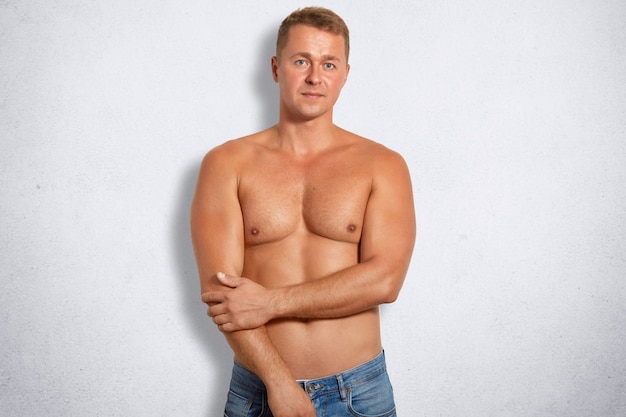
Gynecomastia is a condition that leads to the enlargement of male breast tissue, often causing emotional and physical concerns for those affected. Among fitness enthusiasts and bodybuilders, the development of gynecomastia raises a common question: is there a direct connection between bodybuilding and gynecomastia? This article explores the relationship, causes, and physiological explanations behind this condition in the context of bodybuilding.
Understanding Gynecomastia
Gynecomastia Dubai is characterized by the proliferation of glandular tissue in male breasts. This condition differs from simple fat accumulation (lipomastia), as it involves actual breast gland growth. It is often triggered by hormonal imbalances, particularly when the levels of estrogen increase relative to testosterone.
Although the condition can appear at any stage in life, many associate its onset with significant changes in hormone levels. For bodybuilders, whose training and supplement routines may affect hormone balance, this connection becomes more relevant.
Why Bodybuilders Notice Symptoms
Hormonal Influence Through Training
Intense strength training can naturally increase testosterone levels, which might seem beneficial. However, the body maintains a hormonal balance, and elevated testosterone can sometimes be converted into estrogen through a process called aromatization. Increased estrogen levels can stimulate breast tissue growth, leading to gynecomastia.
Impact of Muscle Mass and Fat Distribution
Bodybuilders tend to reduce overall body fat while increasing lean muscle. As fat levels decrease, the appearance of any developed breast tissue becomes more noticeable. What might remain hidden in a person with higher fat content becomes visually prominent in someone with a highly defined physique. This creates a false perception that bodybuilding itself causes the tissue growth, while in reality, it only reveals what was already present.
Training and Diet: Are They to Blame?
Protein and Caloric Surplus
Bodybuilders often maintain a high-protein, high-calorie diet to support muscle hypertrophy. While food itself does not cause gynecomastia, imbalances in diet—especially when paired with inconsistent training routines—might indirectly contribute by impacting metabolic and hormonal processes.
Exercise Routines and Recovery
Overtraining, without adequate rest and recovery, may lead to elevated stress hormone levels. Cortisol, known as the stress hormone, can interfere with the natural testosterone-estrogen ratio. This hormonal disruption might increase susceptibility to developing breast tissue.
Does Supplement Use Increase the Risk?
Hormonal Modulators and Their Role
Supplements that influence hormone levels are widely discussed in bodybuilding communities. Some individuals use hormone-altering substances in an attempt to improve strength or physical appearance. These substances can create an imbalance, increasing estrogen levels or suppressing natural testosterone production, which in turn may contribute to the development of gynecomastia.
Over-The-Counter Enhancers
Some over-the-counter performance enhancers may interfere with the endocrine system. These formulations might promise muscle growth or enhanced recovery, but their effect on hormone levels can be unpredictable, especially when taken without professional oversight. Any substance that alters hormonal equilibrium carries the risk of triggering breast tissue development.
Is Gynecomastia Reversible with Training?
Spot Reduction Myth
One common misconception is that chest exercises such as bench presses or push-ups can reduce Gynecomastia in Dubai. While such exercises may improve pectoral muscle tone, they do not eliminate glandular tissue. Targeted training can shape the chest, but cannot directly resolve the issue if the tissue is glandular.
Fat Loss Versus Tissue Change
Fat loss can help reduce the appearance of the chest in individuals with pseudogynecomastia (where fat is the main cause of enlargement). However, in true gynecomastia involving glandular tissue, weight loss or muscle gain will not reverse the condition.
Prevention Tips for Bodybuilders
Balanced Training Programs
Creating a well-rounded training plan that includes strength training, cardiovascular exercise, and adequate rest helps support healthy hormone levels. Avoiding excessive stress and allowing time for muscular recovery can reduce the risk of hormonal imbalances.
Mindful Nutrition
A nutrition plan that supports hormone health includes adequate intake of healthy fats, sufficient protein, and essential micronutrients such as zinc and vitamin D. Consistency in meals and hydration also supports metabolic stability, reducing the risk of unexpected physiological changes.
Avoiding Unregulated Substances
Choosing not to consume unregulated or unverified performance substances is a proactive step toward preventing hormonal disruptions. It’s essential to prioritize long-term health and well-being over short-term physical changes.
Psychological Impact on Fitness Enthusiasts
Confidence and Body Image
For individuals focused on physical aesthetics, the development of gynecomastia can affect self-esteem and confidence. Bodybuilders may become overly self-conscious, especially if their appearance contradicts the ideal image they work hard to achieve.
Seeking Accurate Information
Education plays a vital role in addressing concerns. Understanding the condition helps reduce stigma and promotes rational decision-making about training and supplement choices. Being informed reduces the likelihood of fear-based or misinformed decisions that could worsen the situation.
Conclusion:
While not every bodybuilder will experience gynecomastia, the physical and hormonal changes involved in intense training routines can contribute to its development in certain individuals. Understanding the difference between muscle, fat, and glandular tissue is key. By being mindful of hormonal health and staying educated, fitness enthusiasts can better manage their physical goals while addressing any unexpected developments such as gynecomastia.